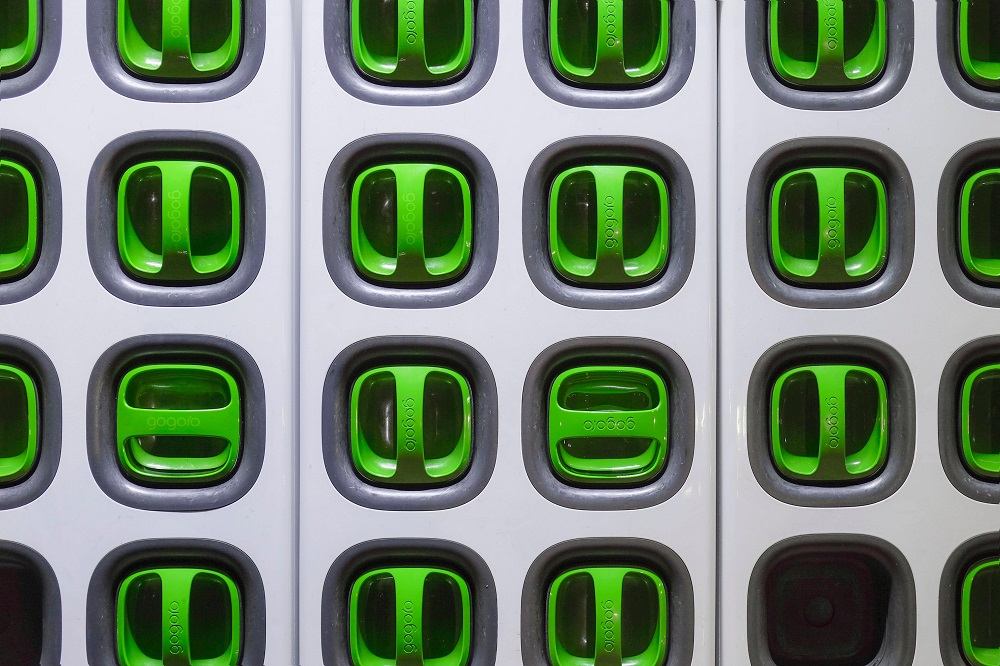As momentum builds toward wider adoption of clean energy, the shift to electric vehicles from conventional vehicles is accelerating. Batteries, accounting for 25-35% of the total cost of an EV, are a critical component in ramping up EV adoption. Accordingly, a race to build the most efficient battery and reduce the battery cost of an EV has started.
The global EV battery market is set to grow to roughly $153.8 billion in 2028 from $53.7 billion in 2021, per Statista. Chinese companies dominate the EV battery market with a 56% market share, followed by Korean companies with a 26% share, and Japanese manufacturers with a 10% share, per data from Mining.com.

China is leading the EV market
China leads the battery race with nearly 558 GWh, or 80% of the world’s lithium-ion battery manufacturing capacity, and is estimated to reach 800 GWh in the next four years. A robust domestic battery supply chain, such as mining and refining of battery minerals, including lithium and graphite, is a major factor behind its dominance. For instance, Ganfeng, a Chinese firm, is the third-largest lithium producer globally and the leading producer in China.
Read more: Sustainability in Tech: 3 Ways for Companies to Become More Sustainable
In terms of battery manufacturers, 6 of the top ten are headquartered in China. All the major OEMs globally, including Tesla, Peugeot, Hyundai, Honda, BMW, Toyota, Volkswagen, and Volvo, depend on CATL, the global market leader for EV batteries.
Figure 1: Leading Battery Manufacturers Globally
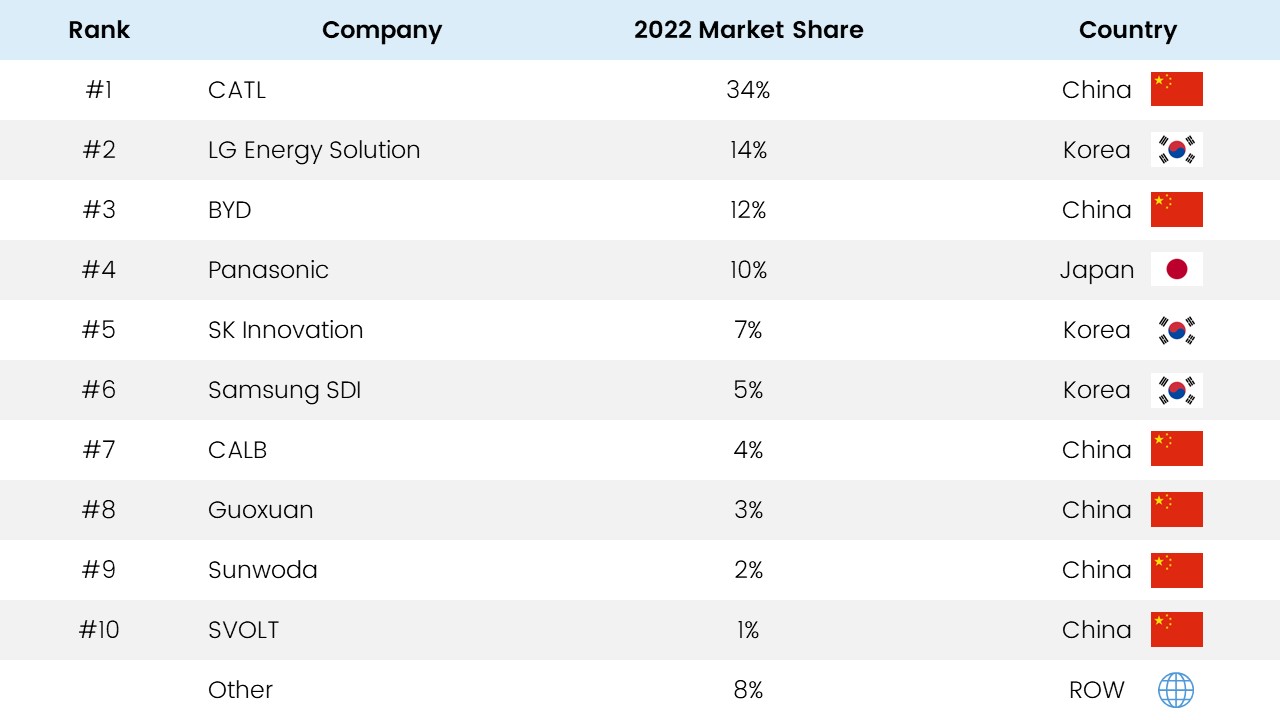
Source: Mining.com
Companies from South Korea and Japan comprise the remaining four of the top ten. Conspicuously, no US company is part of the list.
In a move that could extend CATL’s dominance, the company recently launched its disruptive third-generation cell-to-pack li-on battery, which has raised the bar in volume utilization efficiency (72%) and energy density (c. 255 Wh/kg). This Qilin battery is 13% more powerful than the 4680 batteries Tesla is using in its Model Y SUVs.
Emerging Battery Technologies
-
Lithium-ion batteries
Currently, lithium-ion and lithium-iron-phosphate (LFP) batteries dominate the market, with an estimated size of $44.5 billion in 2022. These batteries provide high energy density, which allows battery-powered devices and vehicles to run longer before needing a recharge. But they age quickly and are flammable with high thermal runaway. In contrast, LFP batteries cost less relative to Li-ion as they use iron and phosphate, which are abundant and thus cost less, instead of nickel and cobalt. Also, they are more durable. The technology hence has seen increased adoption and offers a better value proposition - with key benefits including long-life cycle and high safety performance. Tesla, as well as multiple Chinese car manufacturers, use LFP.
-
Sodium-ion batteries
Sodium-ion battery technology is fast emerging as a game-changing alternative to lithium-ion batteries. The sodium-ion battery holds up well even in very cold climates and virtually eliminates the problem of thermal runaway tied to lithium-ion batteries. Sodium-ion batteries could also help with shortages of critical battery materials, as iron and sodium are cheap and plentiful. However, matching lithium’s high energy density is still a challenge for Sodium-ion battery manufacturers. Startups such as Natron Energy and Clarions are pioneering development in sodium-ion batteries.
.jpg)
Read more: How is Multi-stakeholder Assessment Helping to Create Long-Term Sustainable Value?
-
Solid-state batteries (SSB)
Solid-state batteries could have a transformational change on the EV battery and vehicle market and lead to a surge in EV adoption. SSBs are not only lighter, denser, and sturdier, but they also take less time to charge and use up less space, which will help make EV vehicles structurally more efficient. Solid-state batteries can help in cutting the carbon footprint of EV batteries by 29% compared with liquid lithium-ion batteries. Multiple US start-ups like QuantumScape, Powerit, Solid Power (which underwent the SPAC merger in 2021), and Factorial Energy are working on the development of solid-state batteries. Al. Also, leading OEMs, including BMW, Ford, and Toyota Motors, are planning to incorporate the technology in their upcoming projects. While the technology is still in the development stage, it is a strong long-term investment due to its disruptive market potential.
Where Does the US Stand
While the U.S. is far behind China with around 44 GWh or 6% of global manufacturing capacity, it is expected to grow its capacity to 130 GWh in the next four years.
Lucid Air Dream Edition offers 520 miles, the longest-range electric car in the US, 115 miles more than Tesla’s Model S sedan, whose estimated range is 405 miles.
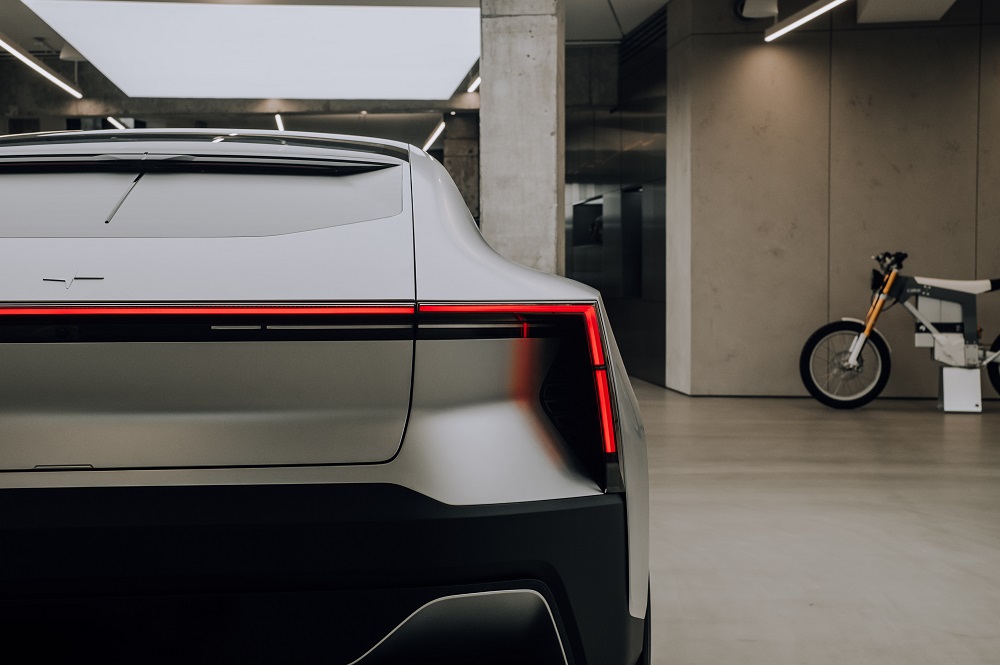
Why is the US lacking behind in the EV Race?
EV batteries rely on metals that are mined, like lithium, nickel, cobalt, copper, and graphite. According to the International Energy Agency, almost 80% of the raw lithium across the globe is mined in China, Australia, and Chile. And China has control over more than half of the world’s lithium processing and refining. However, the US is far behind, as only 1% of global lithium is mined and processed in the US, per the US Geological Survey. Thus, the US is heavily dependent on China for the supply of raw materials.
Read more: Tech-driven Enterprises in 2023: How will Technology Spending Deliver Value?
In step with the rising demand for EVs, the price of lithium has also jumped up to approximately $40,000 per ton from $15,000 per ton in 2018. Additionally, prices of other metals like cobalt and nickel have also soared, leading to high costs for manufacturers and a possible reason for lower production scale. With domestic battery production too low to fulfill the rising demand, there is a massive supply gap for American EV manufacturers.
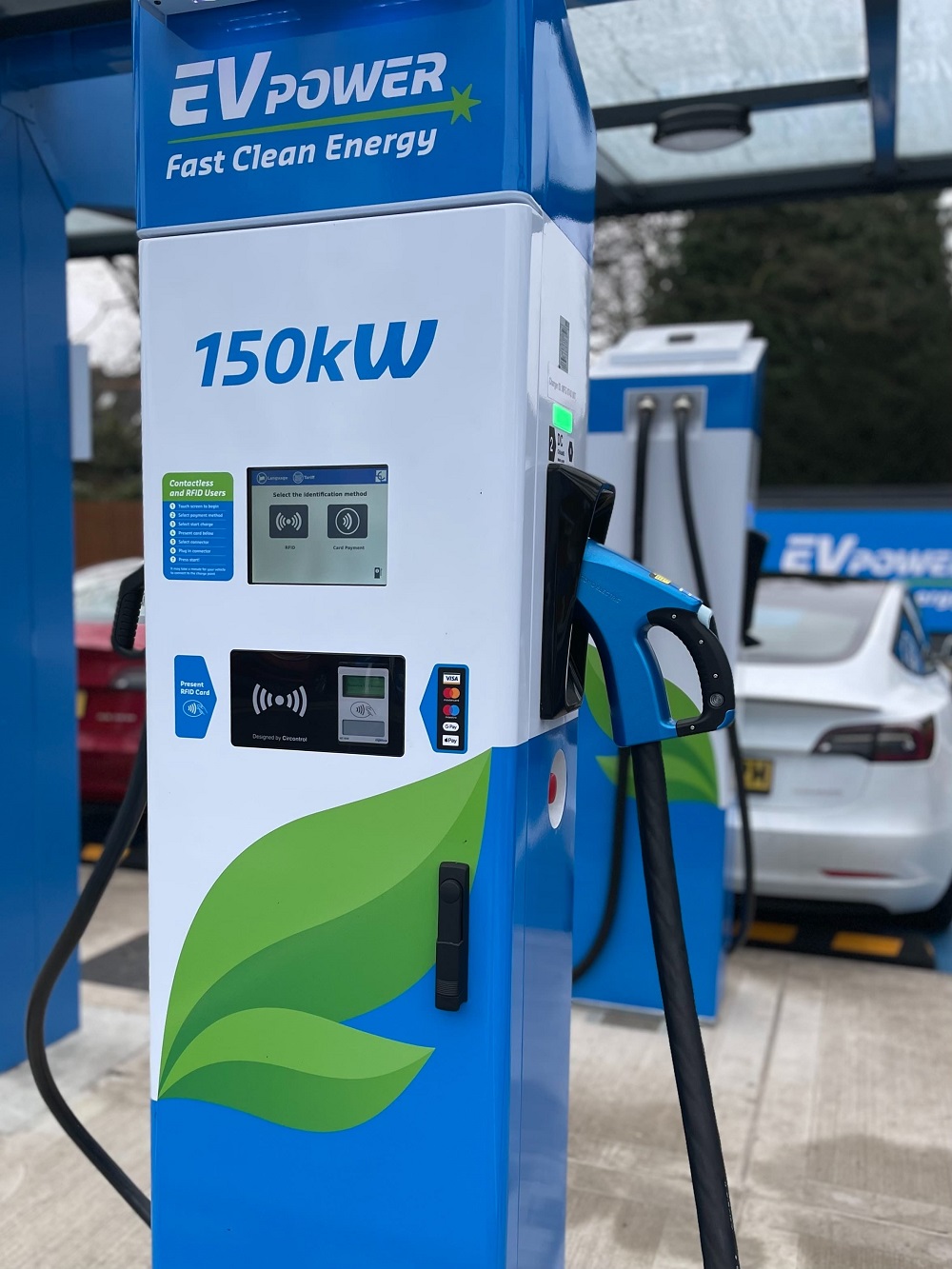
Steps to Boost the EV Battery Industry in the US
In August, President Biden signed the Inflation Reduction Act (IRA) into law which aims to invest in domestic energy production, thus keeping EVs affordable for people. The IRA earmarks $60 billion for boosting the clean energy supply chain in the US. Additionally, the IRA act has brought significant changes in EV tax credits to encourage people to buy EV vehicles in the U.S.
-
A key criterion, per the Clean Vehicle Credit law (part of IRA), for receiving an EV tax credit is purchasing cars assembled in North America.
-
The IRA also mandates a threshold, which increases every year in an attempt to control EVs and their battery supply chain, that the percentage of battery components manufactured in the US should meet. For instance, in 2024, to qualify for up to 50% of the $7,500 credit, over 40% of the battery components should be assembled in North America.
Additionally, the US Department of Energy (DOE) has recently launched a $32 million program to advance the domestic supply chain for critical minerals. The DOE announced a conditional commitment of a $2.5 billion loan to Ultium Cells, a JV between General Motors and South Korean battery giant LG Energy Solutions. If approved by the DOE, the loan could help Ultium finance the battery-pack gigafactories it is building in Michigan, Ohio, and Tennessee.
Similarly, other US automakers have also announced their investment plans. A JV between Ford and South Korea’s SK Innovation plans to invest $11.4 billion in battery factories and EV assembly plants. Stellantis plans to invest roughly $2.5 billion in a battery plant in Kokomo, Indiana.
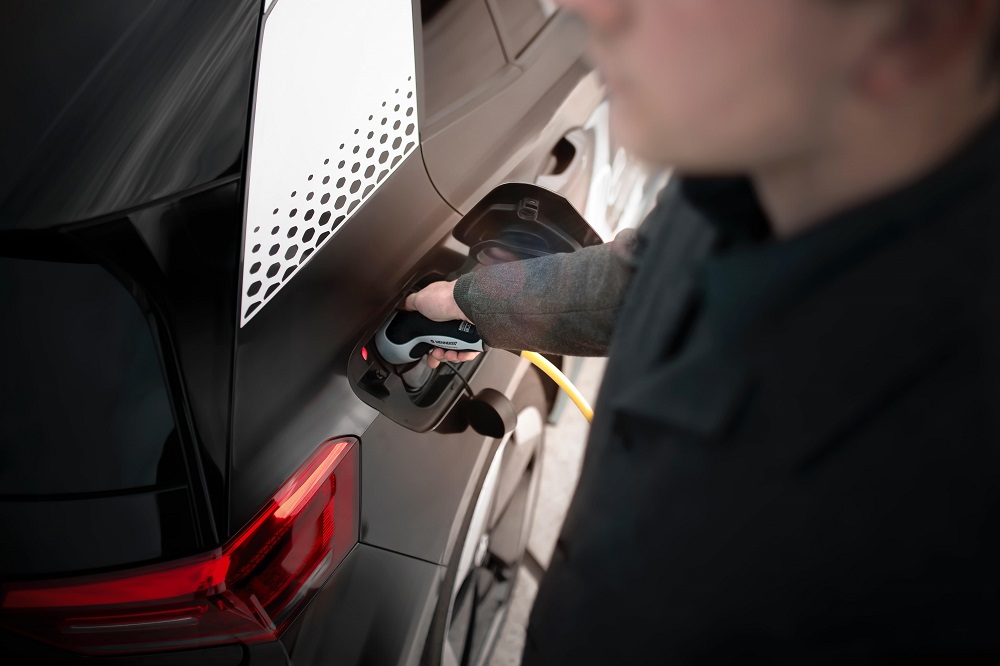
Read more: The ESG Rating Phenomenon: A Guide to Understand ESG Ratings
The OEMs are also making strategic investments in innovative startups in the space. In 2021, GM invested $139 million in a series D round raised by SES, a hybrid lithium battery start-up. Similarly, Ford, BMW, and Volta Energy have invested $130 million in a series B round raised by Solid Power. This year, Factorial Energy has raised $200 million as a part of a series D round led by Mercedes-Benz and Stellantis.
These investments would act as a shot in the arm for the EV battery space in the US, boosting the lithium-ion cell manufacturing capacity between 2021 and 2025, to 382 GWh, per S&P Global Commodity Insights. More importantly, these investments will spur the private sector to come up with new technologies that will help offset China’s natural advantage in Lithium production and, at the same time, accelerate the shift to EVs.
With a presence in New York, San Francisco, Austin, Seattle, Toronto, London, Zurich, Pune, Bengaluru, and Hyderabad, SG Analytics, a pioneer in Research and Analytics, offers tailor-made services to enterprises worldwide.
A leader in ESG Services, SG Analytics offers bespoke sustainability consulting services and research support for informed decision-making. Contact us today if you are in search of an efficient ESG integration and management solution provider to boost your sustainable performance.


